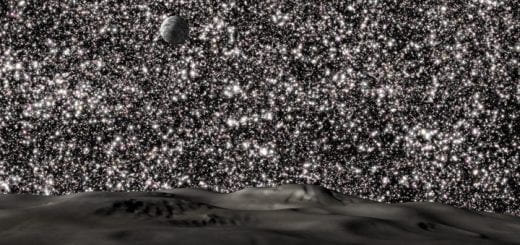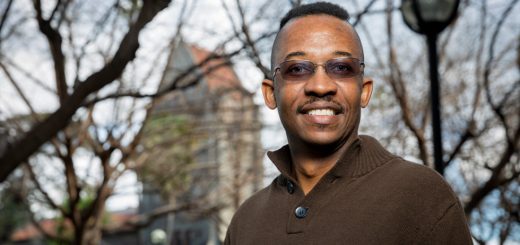A 50-Year Wave
For a half century, Moss Landing Marine Laboratories has been the university’s connection to the vastness of the nearby Pacific Ocean—as well as Antarctica, the Arctic, the Indian Ocean, Mexico, Chile, Indonesia and the Caribbean. To honor this momentous milestone, here are 50 facts about the lab that serves a consortium of seven CSU campuses, including San Jose State.
1
Envisioned in the early 1960s by a few professors at San Jose State, San Francisco State and Hayward State (now CSU East Bay), Moss Landing Marine Labs evolved into a CSU marine research consortium and “academic powerhouse.”
2
The 1965 purchase price of MLML’s first headquarters, the Beaudette Foundation for Biological Research facility on Moss Landing Spit: $210,000.
3
In the fall of 1966, 14 students took advantage of MLML’s first complete set of courses.
4
Lieutenant Governor Robert Finch delivered the address at MLML’s official dedication ceremonies in April 1967. The following day, MLML hosted an Open House, a tradition that continues today.
5
Funded by contributions from Open House attendees, the MLML Wave Award recognizes graduate students who also devote time and efforts to community service. In 2016, donations of more than $20,000 supported multiple MLML scholarships.
6
Marilyn Vassallo holds the honor of “first MLML graduate,” receiving her graduate degree in August 1968. To date, MLML has awarded more than 640 master’s degrees.
7
In the 1960s, 80 percent of the student body was male; today, 80 percent is female.
8
MLML’s first faculty member, Minnesotan James Nybakken, taught at MLML for 32 years and twice served as interim director before his 1998 retirement. To celebrate the end of his marine invertebrates class, Nybakken invited students to his home in Carmel Valley to chow down on a dinner of clams, mussels, crabs and other kinds of “inverts” they’d studied during the semester.
9
Current Director Jim Harvey, ’75 Biological Science, ’79 MA Biology, is also an alumnus of the program. A member of the MLML faculty since 1989, his research specialties center on large whales, Leatherback turtles, California sea lions, and Pacific harbor seals.
10
MLML is ideally located to study the marine world. Monterey submarine canyon, recognized for its geological significance since the 1930s, sits just offshore Moss Landing. To the east is Elkhorn Slough; to the north and south, sand dunes and extensive kelp forest habitats.
11
Students and faculty members have been “in the mud” of Elkhorn Slough—dubbed the “cosmic center of the universe” by Mark Silberstein, ’73 Zoology, ’87 MA Biological Science—for more than 40 years.
12
In 1974, professors Bill Broenkow, James Nybakken and Greg Cailliet coordinated the first comprehensive cataloging and collection of Elkhorn Slough’s flora and fauna, resulting in a milestone MLML report on the hydrography and ecology of the area.
13
In the early days of the program, the job of student caretaker came with housing: a trailer on the MLML property. John Oliver, ’73, was the first to call the trailer home.
14
In 2013, the research vessel Point Sur sailed to Antarctica to support research operations at Palmer Research Station, stopping at six foreign ports along the way and crossing the treacherous Drake Passage. MLML employee Tara Pastuszek, who made the voyage, said: “I feel I can speak for the entire crew in expressing pride in getting to see the Sur in one of the most majestic places on earth.”
15
Despite MLML efforts to retain it, the R/V Point Sur was retired by the National Science Foundation in 2015. An estimated 10,000 oceanography students, many MLML students among that number, were put to sea on her decks.
16
Serving as current research vessels: the John H. Martin, an oceanographic research vessel, and the Sheila B, whose unique hull design allows the vessel to work in Elkhorn Slough’s shallow waters.
17
Professor Ivano Aiello is currently on a 471 feet-long research vessel in the Indian Ocean with a team of international scientists coring the deep sea sediments to understand past climates of the middle Miocene to late Pleistocene.
18
MLML research projects have garnered more than $500 million in contracts and grants.
19
Under the leadership of 1976-1993 Director John Martin, MLML gained an international reputation in ocean science. Martin discovered that iron was a limiting element in many oceans, which is considered one of the most significant findings in the past 100 years.
20
MLML’s first dive boat was a salvaged black raft, powered by a 15-horsepower outboard motor. Scientific diving has been an integral part of MLML since 1968.
21
Credit for the catchphrase “The Little Marine Lab that Could” goes to 1998-2011 Director Kenneth Coale.
22
Sheila Baldridge, MLML’s first librarian, presided over a library “hosting wood paneling, a fireplace and windows to the sea … a warm, invitingly snug place in which to learn,” recalls alumnus Gary Greene.
23
MLML alumnus Chuck Versaggi designed the Wave Logo in 1969/1970.
24
For a fictional treatment of the 1970s MLML experience, read Marine Dreams, a novel by John Heine, ’82 MA Biological Science, that centers on the romance and marine research of two graduate students, Will and Sandra.
25
MLML’s first marine mammal and seabird specialist, G. Victor Morejohn, was also a sculptor. His bronze sea lions are on display at UC Santa Cruz.
26
The 6.9-magnitude Loma Prieta earthquake on Oct. 17, 1989 “shook MLML’s world.” The sand dune beneath the main building sank and stretched; liquefaction caused the building’s foundation to move one meter toward the ocean, destroying the structure without completely collapsing it.
27
During the 15-second Loma Prieta quake, Jim Harvey remembers “calling students back who were running from class. They were trying to get out of the courtyard but potentially running under the water tank that was swaying two to three feet each way.” Mud volcanoes erupted on the volleyball court. Sewer and water lines ruptured. A seiche developed in Moss Landing Harbor.
28
To alert then-Director Martin what had happened to the Labs, alumnus Danny Heilprin drove his Honda Accord down the fire road through the dunes and used the pay phone at the Moss Landing liquor store. MLML’s years of occupying temporary quarters had begun.
29
SJSU President Gail Fullerton arranged to have essential MLML offices and classrooms relocated to a trailer campus in Salinas, the beginning of what veterans of the era, with wry affection, describe as the “Trailer Trash Years.” These makeshift accommodations would be home to MLML until January 2000.
30
Faculty and students called the temporary Salinas Marine Lab (or SML) smell because of aromas wafting from the Nestle chocolate factory and fertilized fields.
31
To keep up community spirit, the 25th reunion celebration, held in 1991, included a volleyball tournament, music by the Slough Stompers (comprised of MLML alumni Tom Harvey, Chris Jong, Jim Oakden, Mark Silberstein and Bruce Stewart) and awards crafted from the old library’s paneling.
32
Halloween parties at the Elkhorn Yacht Club also helped lift spirits—shark and marine-themed costumes favored, but not obligatory. In 1988, Greg Cailliet wore a “Greenhouse” of green cardboard to underscore climate change.
33
After much debate, the Peterson property on Water Tower Hill was selected as the site on which to rebuild the Labs. Construction took two years, from 1998 to 2000.
34
Approximately eight thousand years ago, “The Hill” was home to the Calendaru tribe (people of “Bay Houses”), who spoke Ohlone.
35
To defend California’s Central Coast following the Pearl Harbor attack, Water Tower Hill also served as an encampment site for the 54th Coast Artillery Regiment from 1942 to 1944.
36
The current main facility received the U.S. Green Building Council’s Gold Certification for Leadership in Energy and Environmental Design (LEED), the first building in the CSU system to earn the distinction.
37
PSRC Program Director David Ebert, an internationally known shark expert, has been researching chondrichthyans for more than three decades and authored the popular field guide, Sharks of the World.
38
PSRC graduate researcher Paul Clerkin made headlines in 2014 when he discovered eight new shark species during a two-month Indian Ocean expedition. He was subsequently profiled on the Discovery Channel’s “Shark Week.”
39
After discovering a new species of lanternshark, PSRC graduate student Vicky Vásquez got to name it: Ninja Lanternshark. She immortalized the experience with a YouTube video, “We Named a Shark!”
40
The Center for Aquaculture (the cultivation of aquatic plants for food) is helping to stimulate the aquaculture industry in California, fostering growth in marine algae production for potential uses in renewable biofuels, animal feed and innovative food products, such as sustainable seafood and seaweed.
41
The research of MLML’s newest faculty member, physical oceanographer Tom Connolly, focuses on the oceanography of coastal regions. In his spare time, he builds his own surfboards to ride the waves.
42
The Chemical Oceanography Lab, led by Kenneth Coale, is one of the few labs in the world to accurately collect and measure low levels of trace metals in the ocean.
43
Professor Nick Welschmeyer is a world expert on testing systems designed to clean ballast water in large ships, thus reducing the introduction of invasive species.
44
Professor Jon Geller has funding to determine the invasion of potentially radioactive invertebrates drifting over to California after the 2011 Japanese earthquake and subsequent Fukushima nuclear power plant accident.
45
Researchers in the Phycology Lab, led by Mike Graham, study the physiology, ecology and evolutionary biology of seaweeds—primarily Pacific Coast and Gulf of California seaweeds. The lab’s current research focuses on kelp-based systems.
46
To officially open MLML’s new facilities on The Hill in 2000, SJSU President Robert Caret fittingly performed a symbolic “kelp cutting” at the dedication ceremony.
47
Vertebrate Ecology Lab head Birgitte McDonald is working to photographically identify Risso’s dolphins. Her lab has also started a new collaboration with UCSC’s Costa Lab to research the ecology of northern elephant seals.
48
With a $330,000 National Science Foundation grant, Scott Hamilton has been conducting a three-year (2014-2017) study of the effects of increased ocean acidity on young rockfish.
49
Assistant Director Kathleen Donahue also serves as volunteer director of the Friends of MLML, an organization that hosts a community lecture series, the Monterey Bird Festival and scholarship opportunities for MLML students. Learn more and donate at: friends.mlml.calstate.edu.
50
Unveiled at MLML’s 50th anniversary celebration: a 50th anniversary quilt containing more than 3,300 pieces of fabric and “populated with 50 years of MLML student and research activities.”



